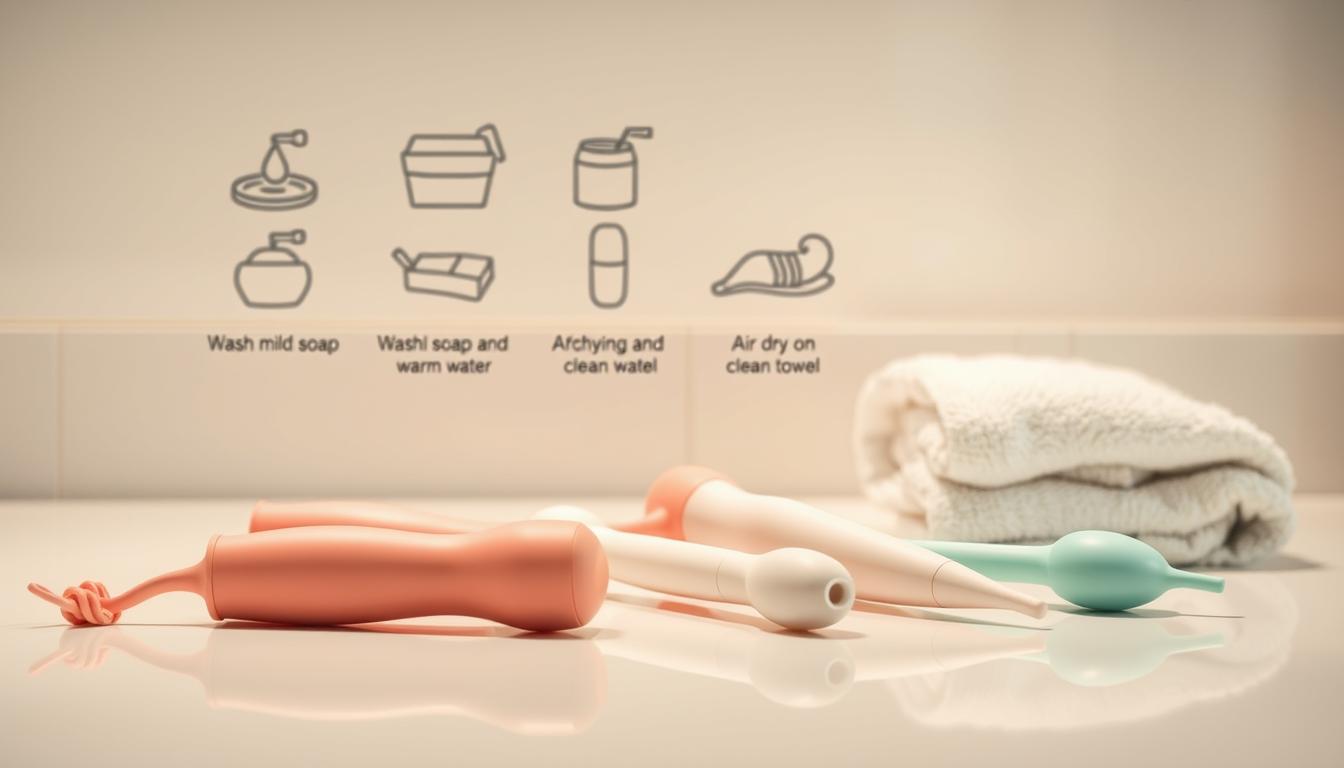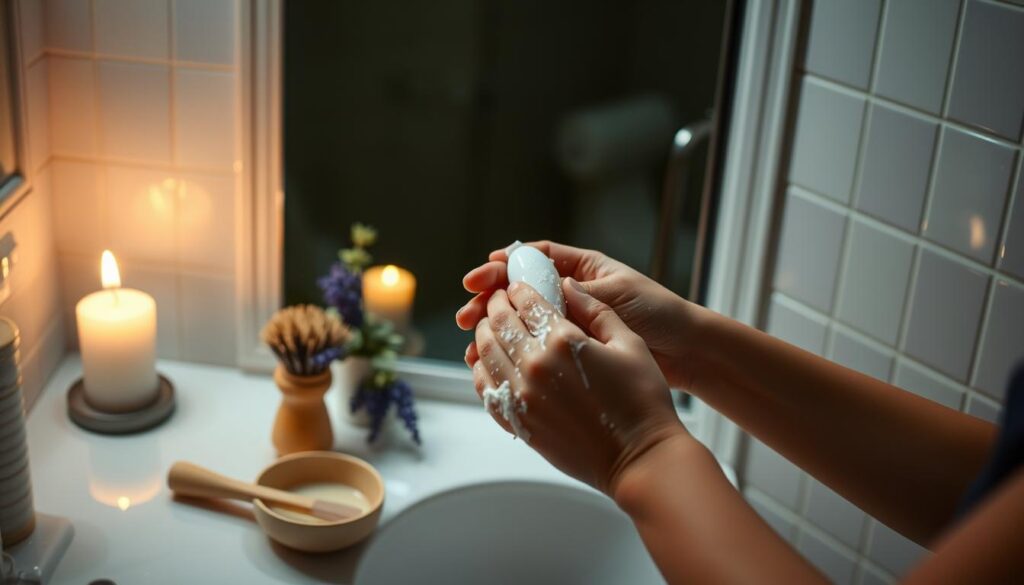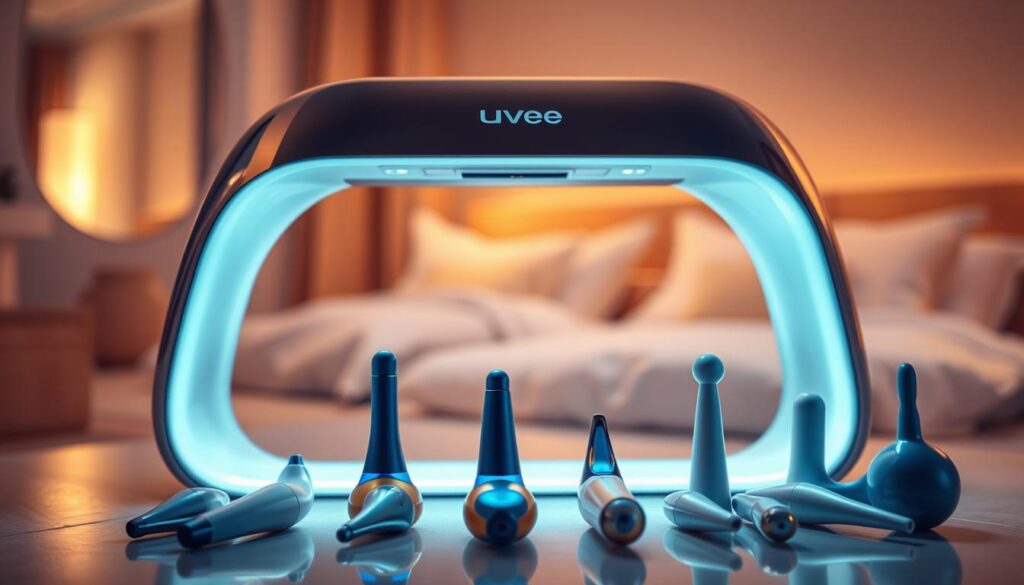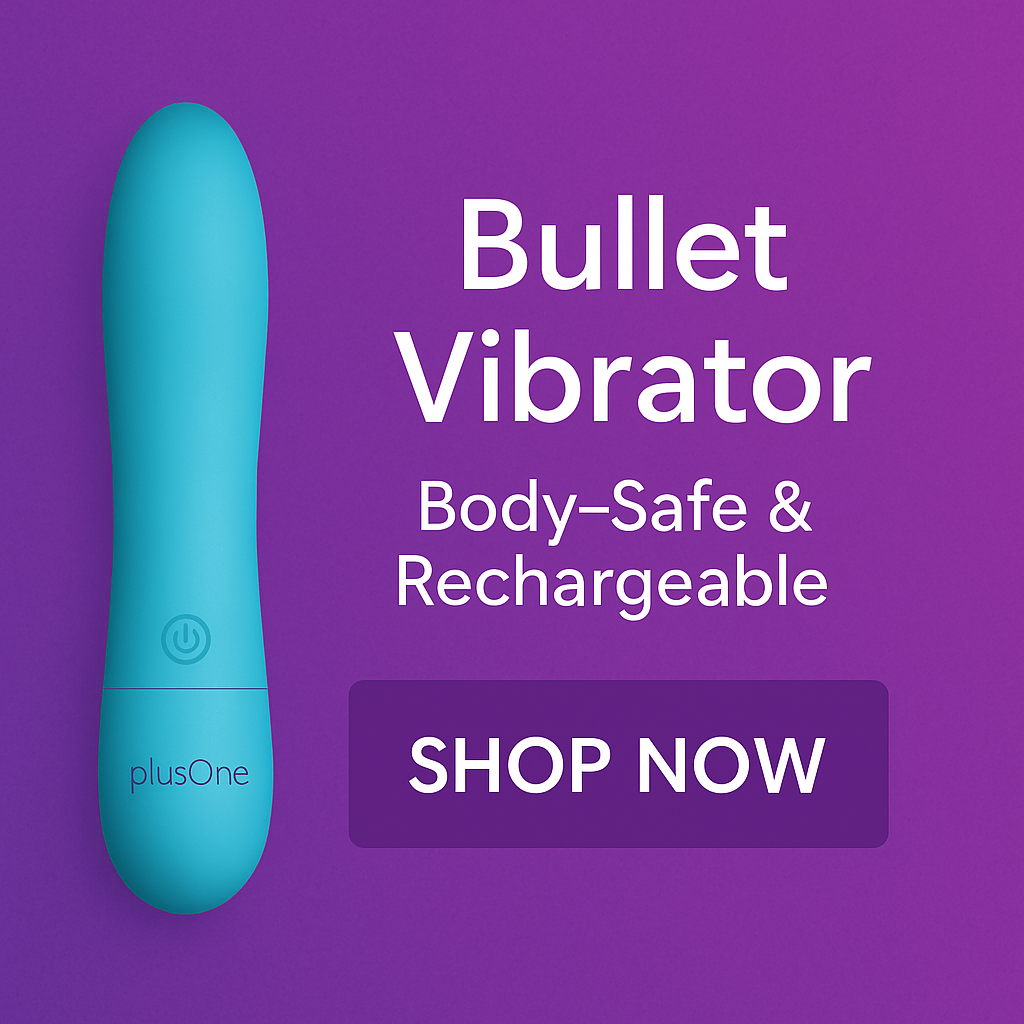
Keeping sex toys in top condition requires more than occasional wiping. Proper maintenance ensures they stay safe, functional, and ready for use. Whether it’s a silicone device or another material, understanding basic care steps can add months—or even years—to their lifespan.
Most products benefit from simple routines. Warm water and mild soap work well for surface cleaning, especially when used by one person. Always check if the item is waterproof before submerging it. Manufacturers often include specific instructions to avoid damage.
Regular cleaning isn’t just about hygiene—it prevents bacterial buildup and material degradation. Innovations like UV-C sanitizers offer advanced options, but traditional methods remain effective. This guide will explore both approaches, ensuring readers find solutions that fit their lifestyles.
Key Takeaways
- Basic cleaning with mild soap and water suits most materials.
- Always verify waterproof ratings before washing.
- Follow manufacturer guidelines to avoid damaging delicate components.
- Regular maintenance prevents bacterial growth and extends product life.
- UV-C technology provides a modern alternative for thorough sanitization.
Understanding the Importance of Toy Hygiene
Proper hygiene practices for intimate devices go beyond surface-level care. When sex toys aren’t cleaned thoroughly, they become breeding grounds for harmful microorganisms. Research shows that biofilms—sticky layers formed by bacteria—can develop on porous materials, making them harder to sanitize over time.
Preventing Bacterial Growth and Infections
Common pathogens like Escherichia coli and Staphylococcus aureus thrive on neglected toys. These bacteria may lead to urinary tract infections or skin irritations. Candida albicans, a yeast linked to fungal infections, can also linger on surfaces if not removed properly.
A 2022 clinical review found that 34% of shared devices tested positive for bacterial vaginosis-causing microbes. As one gynecologist notes:
“Biofilms act like shields, letting bacteria survive routine washes.”
This underscores the need for consistent, thorough cleaning routines.
Maintaining Health and Safety
Shared use between partners increases cross-contamination risks. Even solo users benefit from regular sanitation—residual lubricants or bodily fluids degrade materials and attract pathogens. Simple habits, like washing hands before handling toys, add extra protection.
Prioritizing hygiene isn’t just about avoiding discomfort. It safeguards long-term wellness, ensuring devices remain safe for exploration. Pairing clean tools with a well-prepped body creates a healthier experience overall.
Determining Your Toy’s Material and Water Safety
Knowing your device’s composition is the first step to effective maintenance. Materials dictate cleaning methods, water tolerance, and long-term durability. Start by checking labels or product descriptions—manufacturers often specify whether a toy is nonporous or porous.
Identifying Nonporous vs. Porous Materials
Nonporous materials like silicone, glass, or stainless steel have smooth surfaces that repel moisture and bacteria. These resist absorbing bodily fluids, making them easier to sanitize. A quick wipe with soap and water often suffices.
Porous materials, such as jelly rubber or certain plastics, contain microscopic holes. These can trap bacteria and require specialized cleaners. Over time, porous options may degrade faster, even with careful care.
Assessing Waterproof and Splashproof Ratings
Always verify a toy’s water resistance before washing. Waterproof devices can handle full submersion, ideal for deep cleaning. Splashproof ratings mean only surface wiping is safe—submerging these risks internal damage.
Refer to the manual or packaging for specifics. Brands like We-Vibe® and Lelo® often highlight water safety guidelines. For example, silicone sex toys may tolerate boiling, while jelly items demand gentler methods.
Material awareness simplifies upkeep. It ensures you choose the right cleansers and techniques, balancing hygiene with device longevity.
How to Clean and Care for Your Vibrator
Maintaining a vibrator’s hygiene requires attention to detail and proper technique. Regular upkeep of sex toys ensures safety while extending their lifespan. Structured routines prevent material breakdown and keep devices ready for use.
Step-by-Step Cleaning Overview
Start by verifying the toy’s water resistance level. Remove batteries if applicable. Rinse under lukewarm water to dislodge debris—avoid submerging splashproof models.
Apply fragrance-free liquid soap to a soft-bristled toothbrush designated for this purpose. Gently scrub grooves and seams for 20 seconds each. Rinse thoroughly, ensuring no residue remains.
Pat dry with a clean microfiber cloth. Air-dry completely on a towel away from dust. For non-waterproof options, UV-C sanitizers like the UVee eliminate bacteria in three minutes without moisture.
Use cleaners specifically formulated for intimate products. Harsh chemicals can damage the body of silicone or rubber devices. Store in a breathable pouch once fully dry to prevent lint buildup.
Consistent cleaning routines take less than five minutes but make a lasting difference. They protect both users and sex toys from contamination risks while preserving material integrity over time.
Traditional Cleaning Techniques
Effective maintenance starts with mastering basic cleaning methods. For sex toys, two approaches dominate: manual washing and dishwasher use. Each method suits different materials and lifestyles, but both aim to balance thoroughness with practicality.

Hand Washing Basics
Hand cleaning remains the gold standard for most devices. Start by rinsing the toy under lukewarm water—too hot, and it might warp delicate materials. Apply a mild, fragrance-free soap to a soft cloth or brush, scrubbing crevices gently. This removes residue without abrasive friction.
Pros include precise control over sensitive areas. However, intricate textures may trap soap if not rinsed thoroughly. Always air-dry on a clean towel—microfiber cloths prevent lint buildup.
Dishwasher Use: What to Know
Some non-electronic, waterproof sex toys can handle dishwasher cycles. Place them on the top rack and use a gentle detergent. Avoid high-heat drying settings to protect rubber or silicone items.
While convenient, dishwashers risk damaging internal components in motorized devices. They’re also less discreet for shared households. Stick to hand washing for porous toys or those with electrical parts.
Key tips:
- Hand washing takes 2-3 minutes versus 30+ minutes for dishwashers
- Always check manufacturer guidelines for water temperature limits
- Store cleaned items in breathable pouches away from dust
Exploring Chemical and Disinfectant Methods
Choosing the right cleaning agents is crucial for maintaining intimate devices. While powerful disinfectants seem effective, many can harm materials or leave unsafe residues. Understanding which products to avoid—and why—helps preserve both sex toys and personal health.
Why Avoid Harsh Chemicals and Alcohol
Harsh cleaners like bleach or alcohol wipes degrade silicone and rubber over time. These substances strip protective coatings, creating microtears where bacteria thrive. As dermatologist Dr. Lena Torres explains:
“Alcohol dries out porous materials, making them brittle. Residual chemicals can then transfer to sensitive areas, raising infection risks.”
Liquid soaps and specialized cleaners are gentler. They remove debris without damaging surfaces. For nonporous toys, boiling offers deeper sanitation—just ensure no electrical parts are present.
Chemical residues pose hidden dangers. A 2023 study found traces of isopropyl alcohol on 22% of improperly cleaned devices. These irritants disrupt natural pH balances, potentially causing discomfort. Simple water-based routines minimize these risks.
UV-C sanitizers provide chemical-free alternatives. They eliminate 99.9% of bacteria without moisture or scrubbing. Always check manufacturer guidelines—some materials require specific care steps detailed in resources like this hygiene guide.
Prioritizing safe methods protects both users and sex toys. Gentle cleansers paired with proper drying keep devices functional for years while safeguarding intimate wellness.
Innovative Cleaning Solutions: The UVee
Modern maintenance for intimate devices has evolved beyond soap and scrubbing. The UVee sanitizer combines cutting-edge technology with practical design, offering a three-in-one solution for today’s users. This sleek device addresses common pain points while keeping sex toys ready for spontaneous moments.

How UV-C Sanitizing Light Works
UV-C light destroys 99.9% of bacteria by disrupting their DNA structure. The UVee emits this germicidal wavelength for 10 minutes, penetrating crevices that manual washing might miss. Unlike traditional methods, there’s no need for water or brushes—simply place the toy inside and press start.
| Feature | UVee | Traditional Cleaning |
|---|---|---|
| Time Required | 10 minutes | 15+ minutes |
| Water Usage | None | Required |
| Battery Impact | Charges during cycle | Risk of water damage |
Additional Benefits: Charging and Secure Storage
This product doubles as a charging dock for vibrators and other battery-operated devices. Its lockable case prevents accidental activation and keeps dust away. As one satisfied user notes:
“I love how it keeps my collection discreet yet accessible—no more tangled cords or awkward storage.”
The UVee accommodates various shapes and sizes, from bullet sex toys to larger models. Its time-saving design makes it ideal for busy lifestyles, while eliminating chemical residues common with liquid cleaners. For those prioritizing convenience without compromising hygiene, this innovation redefines cleaning sex toys.
Special Considerations for Cleaning Different Models
Every intimate device has unique maintenance needs based on its design and composition. Tailoring your approach preserves functionality while minimizing wear. Let’s explore practical strategies for popular items and diverse materials.
Popular Models: Magic Wand vs. Womanizer
The Magic Wand requires careful surface cleaning since it’s not waterproof. Use a damp cloth with mild soap to wipe its head, avoiding electrical ports. For the Womanizer, detach silicone heads and soak them in warm water. Always dry components separately to prevent moisture damage.
Battery-operated toys demand extra caution. Remove batteries before cleaning to protect internal circuits. Non-removable parts? A cotton swab dipped in rubbing alcohol can sanitize crevices—just avoid contact with sensitive materials.
Material-Specific Care Tips
Silicone handles boiling water well—submerge for 3 minutes to kill germs. Glass and steel items can be disinfected with toy-safe sprays. For porous jelly rubber, use antibacterial wipes immediately after use.
Avoid harsh scrubbing on glossy finishes. Microfiber cloths prevent scratches on delicate surfaces. As this hygiene guide notes, always check if parts are dishwasher-safe before attempting automated cleaning.
Shared sex toys between partners need thorough sanitation between uses. Consider UV-C devices or antimicrobial sprays for added protection. Proper care keeps your collection fresh, functional, and ready for action.
Best Practices for Maintaining and Storing Your Sex Toys
Smart storage and upkeep transform temporary toys into long-term companions. Proper organization prevents material reactions and keeps devices ready for spontaneous adventures. Let’s explore simple habits that protect both users and their collections.
Proper Storage Techniques to Avoid Cross-Contamination
Store each sex toy separately in breathable cotton bags or lockable cases. This prevents silicone from sticking to other materials like glass or steel. Dedicated pouches also block dust and lint while maintaining discretion.
Never pile devices together—porous surfaces can transfer bacteria even after cleaning. A 2023 Journal of Sexual Health study found that 41% of shared storage cases contained microbial traces. As one expert advises:
“Treat intimate devices like toothbrushes—keep them apart to avoid cross-contamination.”
Regular Maintenance and Inspection Tips
Check devices monthly for these issues:
- Cracks or discoloration in silicone
- Corrosion around battery compartments
- Loose parts on motorized toys
Always air-dry items completely before storing. Residual moisture breeds mold, raising infection risks. For non-waterproof toys, use UV-C sanitizers or microfiber cloths to ensure dryness.
Store collections in cool, dark spaces—heat warps materials, while sunlight fades colors. Follow these steps, and your toys will deliver reliable performance while staying hygienic for years.
Conclusion
Prioritizing intimate device hygiene safeguards both health and product longevity. Regular cleaning prevents bacterial buildup, material breakdown, and potential infections. Whether using mild soap and water or advanced UV-C tech, consistency is key.
Neglecting care risks cracks in silicone, corrosion in steel, or lingering pathogens. Traditional methods like handwashing or boiling (for nonporous items) remain effective. For busy users, tools like the UVee sanitize in ten minutes while charging devices—no scrubbing required.
Always store sex toys in breathable pouches or lockable cases post-cleaning. Inspect for wear monthly, replacing items with cracks or discoloration. These steps ensure a toy’s life spans years rather than months.
By adopting these habits, users protect their well-being and enhance intimate experiences. A little effort goes a long way—clean sex tools mean safer, more satisfying moments ahead.

